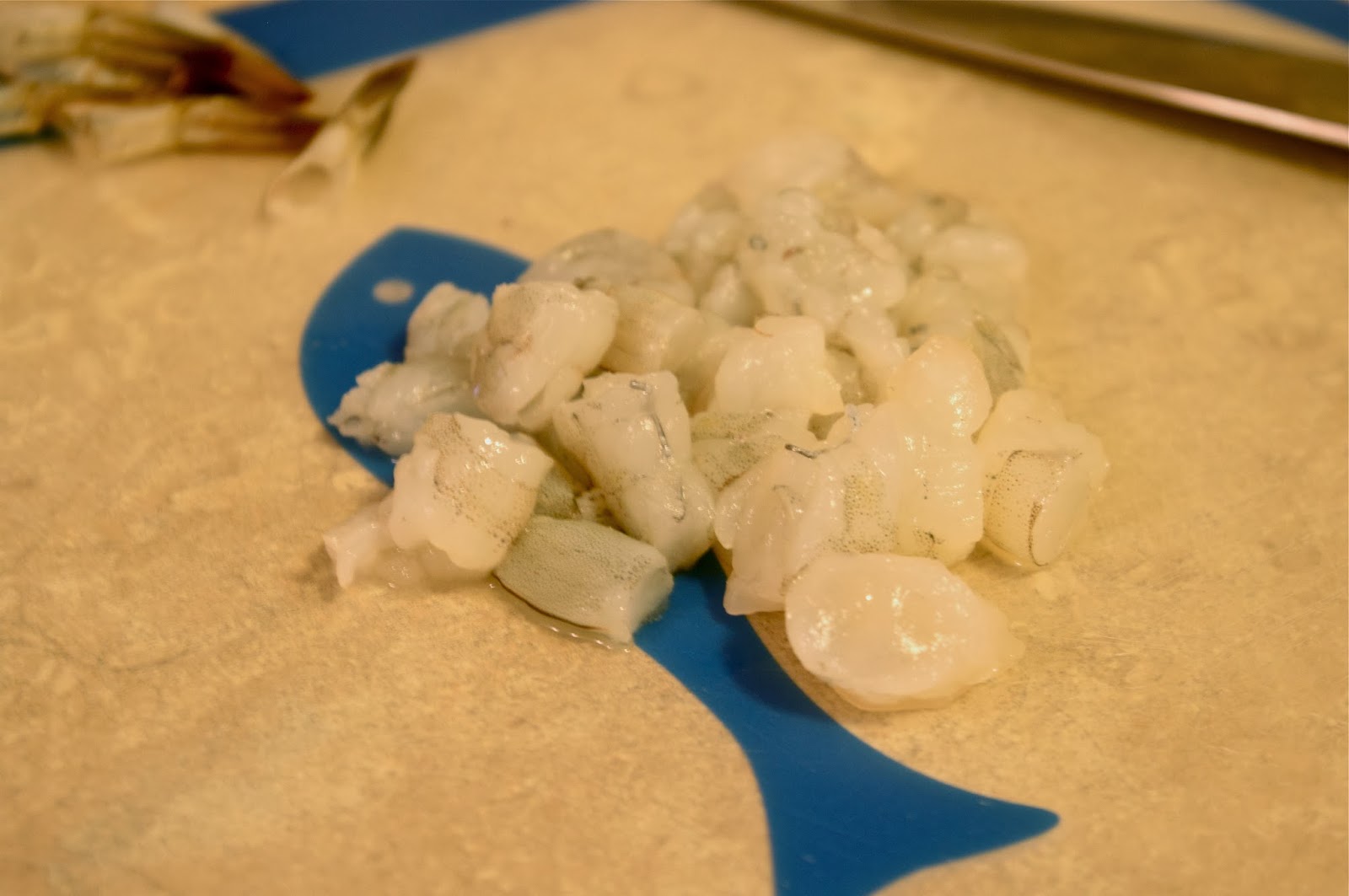Kelp noodles, sea tangle, or 천사채 (chun-sah-chae) in Korean, is basically a raw vegan alternative to our traditional pasta. Now, don't get me wrong. These noodles are definitely not what you'd expect because they are made of brown kelp, but they are definitely worth trying. I first discovered this gem through Blogilates, an online pilates instructor/health guru who is all around AWESOME, and they intrigued me. (btw, check out her youtube channel here) She made these peanut miso kelp noodles that I have yet to try, so I thought it'd be cool if I made japchae with them.
Japchae is a kind of noodle stir fry that consists of glass noodles, made with potato starch, a variety of vegetables, and meat (typically beef). I love japchae so i felt like this was the next natural step in my culinary experiments and this healthy version of japchae is yummy!
Ingredients:
One package of Kelp noodles
5-6 prawns/shrimp (deveined and de-shelled)
2 tbsp of sesame oil
1 tbsp of oyster sauce
1/2 an onion
1 stalk of green onion
2 leaves of kale
olive oil
1 clove of garlic
1 tsp of garlic powder
1 tsp of Mrs. Dash
Salt and pepper to taste if needed
Sesame seeds
1. First, take your kelp noodles out of the package and give them a good rinse. You might freak out because of their weird texture, but just keep at it. Place them in your colander and get rid of all the water.
2. Place them in a separate bowl and cut them into your desired length. (I personally cut them into smaller pieces so they'd be easier to eat)
3. Boil some water and submerge the noodles in them and soak the noodles for at least 10-15 minutes. This'll make them a little softer and easier to eat.
4. Prep your shrimp by de-stemming and deveining them. Cut them into bite size pieces and wash them with a little bit of salt and water to get rid of any extra dirt and pungency. Marinate your shrimp with the garlic powder, Mrs. Dash, and a dash of olive oil and keep it in the fridge for about thirty minutes.
5. Prep your veggies. Dice the onion, mince the garlic, cut the green onion, destem the kale and cut it into tiny pieces.
6. Heat your stove to high and in your wok or if you don't have one, your fry pan, and add some veggie oil and cook your garlic, but make sure it doesn't burn. Add your onions with a pinch of salt and cook will translucent. Then add your kale, and green onion.
7. In a separate pan, sauté your shrimp with a little bit of veggie oil and add to your veggies when they're just cooked through. Avoid over cooking your shrimp because they'll turn into tough rubber erasers.
8. Add the oyster sauce and sesame oil to the wok and add the noodles in the bunch and stir fry together until the sauce coats the noodles.
9. Serve with a sprinkle of sesame seeds and enjoy!here

Thought blurbs
I actually enjoy this version a lot more than traditional japchae because it doesn't leave me feeling gross afterwards. I also eat this with some sriracha (Thai hot sauce) and some kimchi. Haha, but these noodles are very versatile and they definitely are filling. Please try this out!
Happy cooking <3

Thought blurbs
I actually enjoy this version a lot more than traditional japchae because it doesn't leave me feeling gross afterwards. I also eat this with some sriracha (Thai hot sauce) and some kimchi. Haha, but these noodles are very versatile and they definitely are filling. Please try this out!
Happy cooking <3




No comments:
Post a Comment